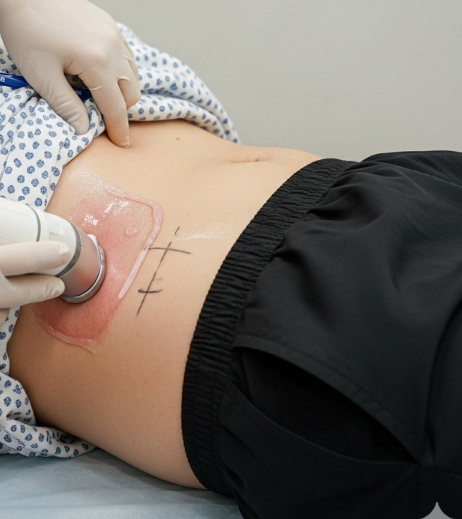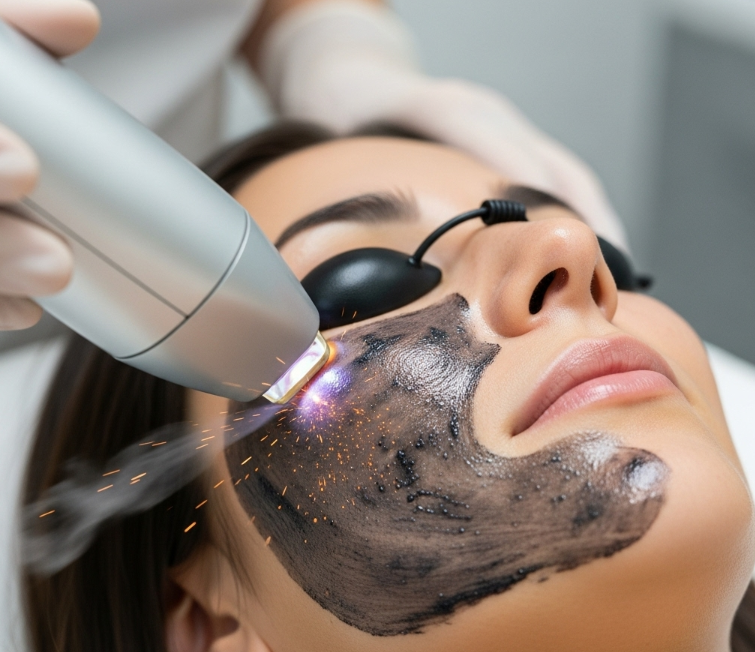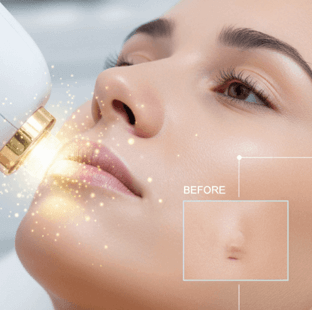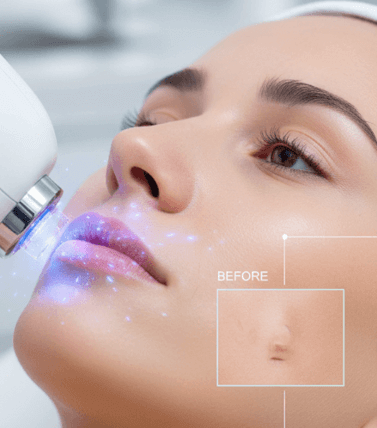Treatment Overview
W-Shaped Umbilicoplasty is an advanced cosmetic belly button surgery that uses a W-pattern incision technique to reshape the navel into a more defined, natural, and aesthetically balanced “innie.” This method is particularly effective for patients with distorted, irregular, or scarred belly buttons, as the W-shaped incision allows for precise tissue rearrangement and better control of symmetry.
In Korea, surgeons are known for their artistic surgical skills and scar-minimizing approaches, making W-shaped umbilicoplasty a popular choice for patients seeking not only correction but also refinement of belly button aesthetics. This procedure is often combined with tummy tuck, mini abdominoplasty, or scar revision to enhance overall abdominal contour.
Purpose & Benefits
- Corrects Irregular or Scarred Navels: Ideal for complex cases with distortion.
- Natural “Innie” Shape: Produces a defined, vertical or oval-shaped belly button.
- Scar Minimization: W-shaped incision helps blend scars into natural folds.
- Precise Symmetry: Allows better control of proportions compared to simple circular incisions.
- Confidence Boost: Enhances appearance in swimwear, crop tops, and low-rise clothing.
Ideal Candidates
- Patients with distorted or irregular belly buttons due to past surgeries or trauma.
- Individuals with excess skin, scar tissue, or asymmetry in the navel area.
- Adults desiring a refined, natural “innie” appearance.
- Men and women in good health with realistic expectations.
- Non-smokers or those able to quit before and after surgery.
Possible Risks & Complications
- Temporary swelling, redness, or tenderness.
- Small risk of visible or widened scarring (minimized with Korean scar-care programs).
- Rare risks: infection, delayed healing, asymmetry.
- Slight risk of overcorrection (navel becoming too narrow).
Techniques Used
- W-Shaped Incision: A zigzag “W” pattern incision made around the navel.
- Tissue Rearrangement: Excess or scar tissue removed for smooth contour.
- Reshaping & Tightening: Creates a natural, inward vertical or oval belly button.
- Scar-Minimizing Closure: Sutures aligned within folds of the “W” pattern to disguise scars.
- Combination Options: Can be performed with abdominoplasty, liposuction, or scar revision.
Recovery & Aftercare
- 1–3 days: Mild swelling, redness, or soreness.
- 3–5 days: Return to light daily activities.
- 1–2 weeks: Healing progresses; stitches removed (if not dissolvable).
- 2–4 weeks: Resume light exercise (avoid abdominal strain early).
Aftercare Guidelines:
- Keep the navel clean and dry.
- Avoid heavy lifting or core-intensive exercise for 2–3 weeks.
- Use prescribed scar-care (silicone gel, sheets, or laser treatments).
- Protect navel area from sun exposure to prevent pigmentation.
- Attend follow-up visits for healing evaluation and refinements.
Results & Longevity
- A more defined, inward-facing belly button with natural symmetry.
- Scars well-camouflaged within the W-shaped incision pattern.
- Long-lasting results with proper aftercare.
- Improved abdominal aesthetics and body confidence.
Treatment Process in Korea
1. Consultation & Planning
- Surgeon evaluates belly button shape, scar tissue, and patient goals.
- Customized plan created, often with 3D imaging preview.
2. Surgery Day
- Performed under local anesthesia with sedation (general if combined with tummy tuck).
- W-shaped incision made around belly button.
- Excess or scar tissue removed; navel reshaped.
- Fine sutures placed to ensure natural symmetry.
3. Post-Operative Monitoring
- Patients usually discharged the same day.
- Dressing applied to protect the navel.
4. Follow-Up & Refinement
- Follow-ups at 1 week, 1 month, and 3–6 months.
- Optional scar refinement (laser, RF, or microneedling) available if needed.
Why Korea is a Top Destination
- Surgeons highly skilled in complex belly button reshaping techniques like the W-pattern.
- Clinics emphasize scar minimization and natural aesthetics.
- Affordable compared to Western countries while maintaining premium standards.
- International-friendly clinics in Seoul with multilingual staff and VIP aftercare.
- Option to combine with other abdominal contouring surgeries for enhanced results.
Cost Range
The cost of W-Shaped Umbilicoplasty in Korea depends on complexity, scar involvement, and clinic reputation.
Estimated Pricing:
- Standalone W-Shaped Umbilicoplasty: USD $2,000 – $3,500
- With Scar Revision: USD $2,500 – $4,500
- Combined with Mini Tummy Tuck or Liposuction: USD $3,500 – $6,500
- Premium Clinics (3D imaging + scar-care + VIP aftercare): USD $4,500 – $7,500
Additional Costs:
- Consultation & imaging: USD $50 – $200
- Medications & aftercare: USD $100 – $200
- Optional scar-care (laser, RF, silicone therapy): USD $200 – $600
Popular Clinics
- Banobagi Plastic Surgery (Seoul): Specialists in advanced navel reshaping and scar revision.
- ID Hospital (Seoul): Known for combining W-shaped umbilicoplasty with abdominoplasty.
- JK Plastic Surgery Center (Seoul): JCI-accredited, premium navel reconstruction services.
- View Plastic Surgery Clinic (Seoul): Experts in scar refinement and natural belly button design.
- JW Plastic Surgery (Seoul): Leaders in complex belly button corrections with discreet scars.




